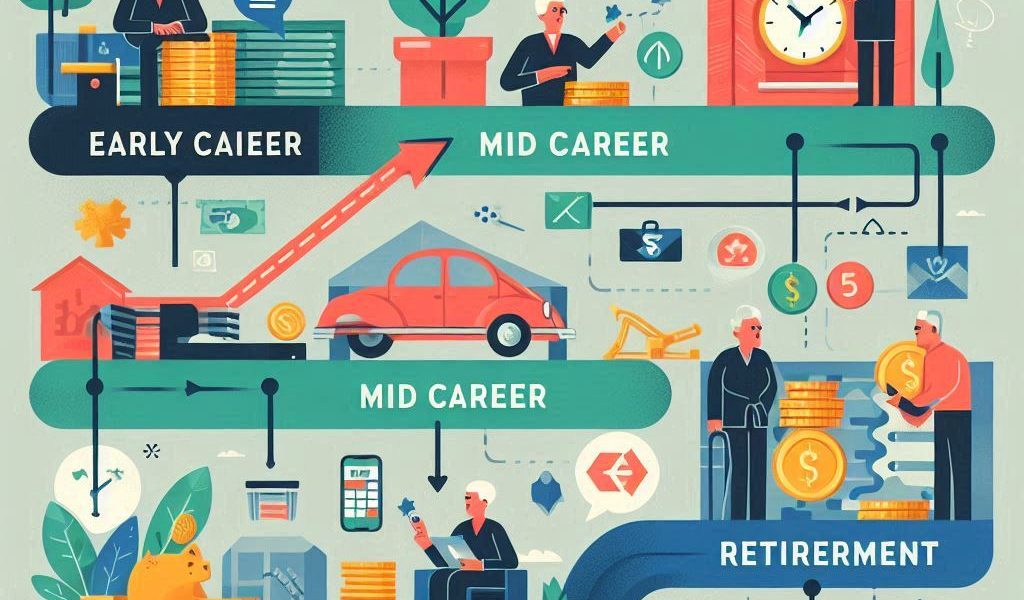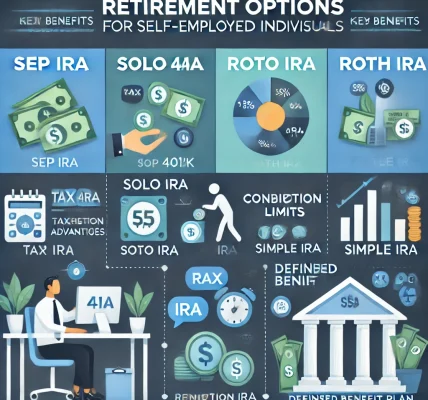How to Choose the Right Retirement Plan Based on Your Life Stage: Which One Offers the Best Returns?
Retirement planning is one of the most important financial decisions you’ll make in your lifetime. It’s not only about securing your future but ensuring financial independence during your golden years. However, with a multitude of retirement plans available, it can be challenging to decide which one best suits your needs. The right retirement plan often depends on various factors, including your age, career stage, financial goals, and risk tolerance.
In this comprehensive guide, we will break down how to choose the right retirement plan based on your life stage and explore which plan offers the best returns.
Why Life Stage Matters in Retirement Planning?
Your life stage plays a crucial role in determining your retirement strategy. As you progress through different phases of life—whether you’re just starting your career, in your peak earning years, or approaching retirement—the financial tools and strategies you need will vary. The ideal retirement plan should evolve with your changing financial landscape.
Life Stages and Retirement Planning
Let’s break down the typical stages of life and how each stage influences your retirement planning:
1. Early Career (Ages 22-35)
- Focus: Growth, Saving Early, and Building Wealth
- Key Considerations: Limited disposable income, student loans, low savings potential.
Best Retirement Plans: In this phase, your key focus should be on saving for the future while still growing your wealth. The earlier you start saving, the more your money can compound over time. Here are the best options for you:
- 401(k) with Employer Match: If your employer offers a 401(k) plan with a match, take advantage of it. You get free money from your employer—something you should not miss.
- Roth IRA: Roth IRAs are particularly advantageous for young professionals, as your contributions grow tax-free, and you can withdraw funds tax-free in retirement. Moreover, you can contribute to a Roth IRA if your income is within the IRS limits.
- Traditional IRA: If you’re not eligible for a Roth IRA, the Traditional IRA is a great alternative. The money you contribute to a Traditional IRA is tax-deductible in the year you make the contribution.
Why this plan works: Early on, your priority should be to take advantage of tax-deferred growth and employer contributions. The long-term compounding effect of starting early will significantly increase the value of your retirement savings.
2. Mid-Career (Ages 36-50)
- Focus: Maximizing Contributions, Risk Tolerance Adjustment, and Refining Goals
- Key Considerations: Increased earnings, growing family expenses, mortgages, and planning for long-term goals.
Best Retirement Plans: At this stage, you’re likely earning more and can afford to make larger contributions. Your retirement portfolio should focus on balance, with a healthy mix of growth and security.
- 401(k) or 403(b): If you haven’t maxed out your 401(k) contributions in your early years, now is the time to do so. The maximum contribution limit increases as you get older. At this stage, you may also want to consider catch-up contributions (for those 50 and over) to accelerate your retirement savings.
- Roth IRA (if eligible): Continue contributing to your Roth IRA, as the benefits of tax-free growth are still significant.
- Taxable Investment Accounts: If you’ve already maxed out your retirement accounts, investing in taxable accounts could offer higher returns. These accounts offer more flexibility, and you can invest in a variety of asset classes.
Why this plan works: With an increase in your income, you have the opportunity to save more aggressively for retirement. This is also the stage when you should be adjusting your investment strategy to a more diversified portfolio that includes a balance of stocks, bonds, and potentially real estate or other asset classes.
3. Pre-Retirement (Ages 51-65)
- Focus: Preservation, Adjusting Risk, Preparing for Withdrawal, and Catching Up
- Key Considerations: Empty nesters, nearing retirement, more disposable income, health concerns.
Best Retirement Plans: At this stage, the goal is less about growth and more about protecting the wealth you’ve accumulated. Risk tolerance should shift towards more conservative investments to preserve capital.
- 401(k) or 403(b): Continue contributing to your 401(k), especially since you can take advantage of catch-up contributions. By this stage, your portfolio should be focused on preservation, and you might want to consider allocating more of your assets into bonds or stable, income-producing investments.
- IRA: Both Roth and Traditional IRAs remain viable options for continued growth and tax benefits. Traditional IRAs are especially beneficial for those who are in a higher tax bracket, as contributions can lower your taxable income.
- Health Savings Accounts (HSAs): If you’re eligible for an HSA, this is an excellent tool for medical expenses in retirement. HSAs offer triple tax advantages (contributions are tax-deductible, the account grows tax-free, and withdrawals for medical expenses are tax-free).
Why this plan works: You’re in the final stages of saving, and the key to success at this point is managing risk while ensuring there’s still room for growth. Catch-up contributions help you save more quickly, and securing tax-advantage accounts helps reduce your taxable income.
4. Retirement (Ages 66 and Beyond)
- Focus: Distribution, Longevity Planning, and Income Generation
- Key Considerations: Transitioning from saving to spending, healthcare needs, required minimum distributions (RMDs).
Best Retirement Plans: By now, you should have already secured a diversified portfolio. In retirement, the key is creating reliable income streams to sustain you for the next 20-30 years.
- Traditional IRA or 401(k) Withdrawals: At age 72, you must start taking required minimum distributions (RMDs) from your retirement accounts. Ensure that you’ve planned for this in advance to avoid penalties.
- Annuities: Some retirees use annuities as a way to guarantee a stream of income for life. Depending on your goals, annuities can provide a steady cash flow for retirement.
- Taxable Investment Accounts: Withdrawing from taxable accounts may be necessary if your retirement savings are insufficient. Be mindful of taxes on capital gains when making withdrawals.
Why this plan works: In retirement, your focus shifts from growing wealth to maintaining it. It’s important to structure your withdrawals to meet your income needs, while also taking into account healthcare costs and potential emergencies.
Which Retirement Plan Offers the Best Returns?
When it comes to choosing a retirement plan that offers the best returns, it’s essential to consider both long-term growth potential and tax advantages. While returns vary based on the market and individual investments, the following plans typically offer the highest returns:
- Roth IRA: This account offers the best long-term returns due to its tax-free growth and tax-free withdrawals in retirement. If you can contribute to a Roth IRA, it’s one of the most effective tools for retirement savings.
- 401(k) with Employer Match: If your employer offers a match, this is effectively “free money,” making it one of the best retirement plans for maximizing returns. The match itself is a guaranteed return on your investment.
- Taxable Investment Accounts: While not tax-advantaged, taxable investment accounts can yield higher returns over time due to flexibility in investing in high-return assets such as stocks and real estate.
- Traditional IRA: The Traditional IRA offers tax-deferred growth, which allows your money to grow without being taxed until you withdraw it in retirement. It’s a solid option for high earners who want to reduce their taxable income now.
Conclusion: Tailoring Your Retirement Plan for the Best Returns
The best retirement plan is the one that fits your current life stage, financial goals, and risk tolerance. Whether you’re in the early stages of your career or preparing for retirement, it’s important to choose a retirement plan that allows for tax-efficient growth and maximizes returns over the long term. Each phase of your life brings new challenges and opportunities, and your retirement plan should evolve accordingly.
Remember, the earlier you start, the better your chances of accumulating the wealth you’ll need for a comfortable retirement. Choose wisely, stay committed to your plan, and make adjustments as needed, and you’ll be well on your way to enjoying a financially secure future.




